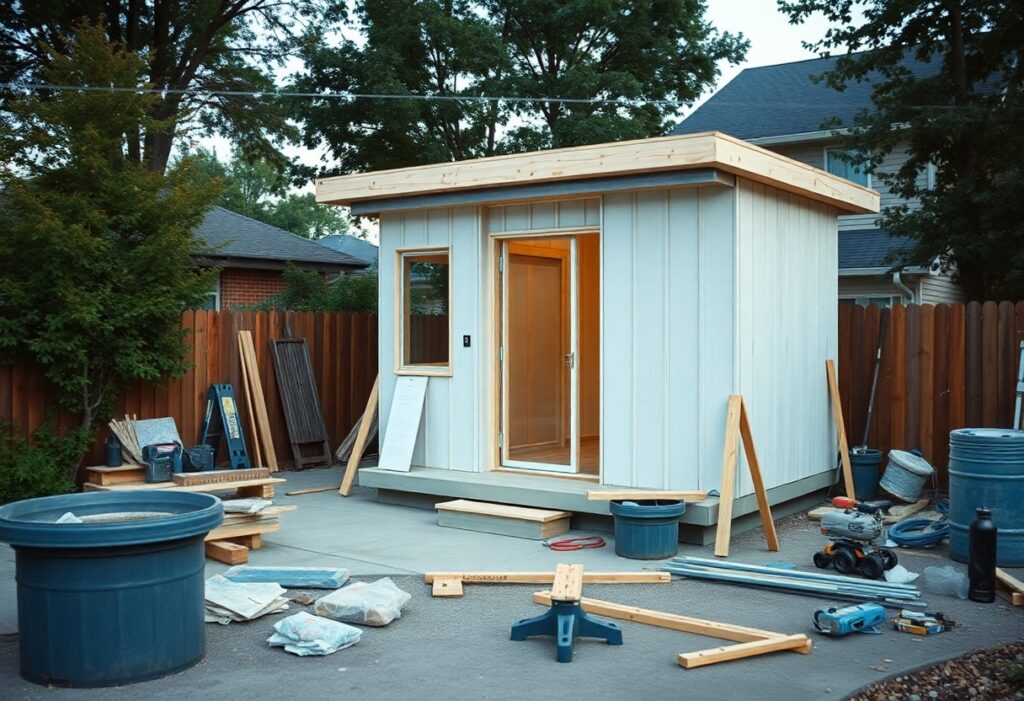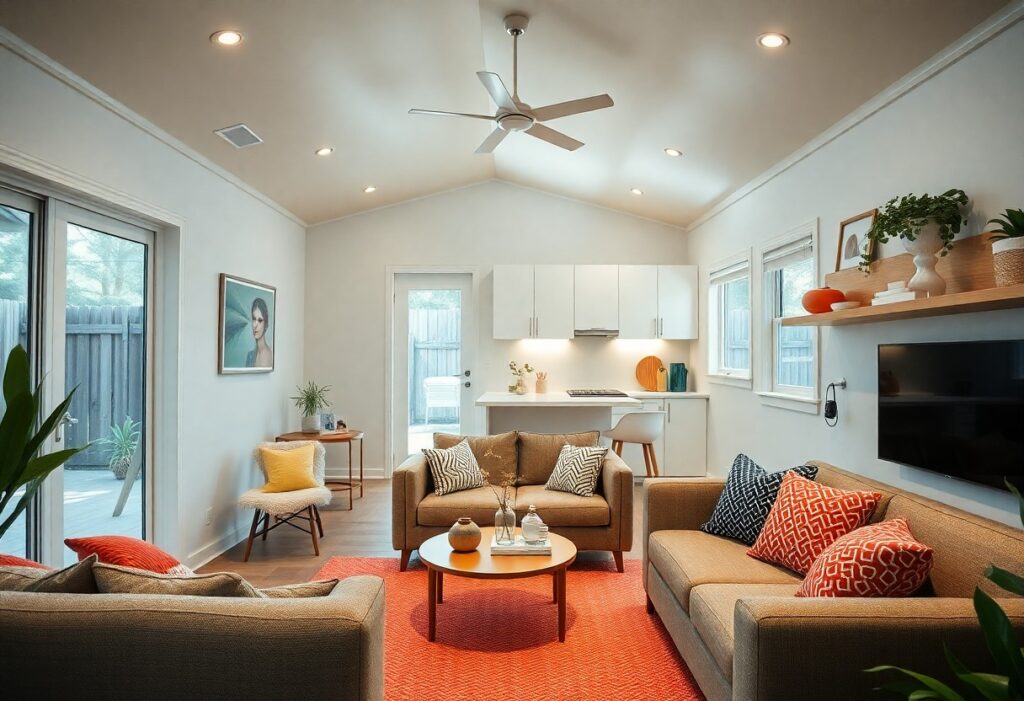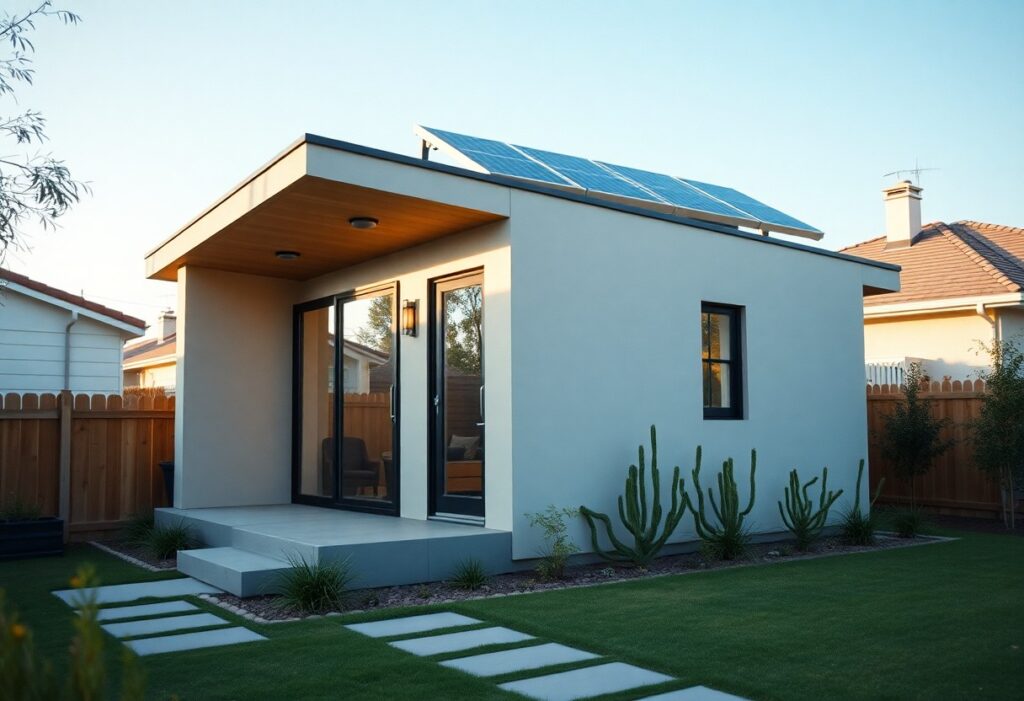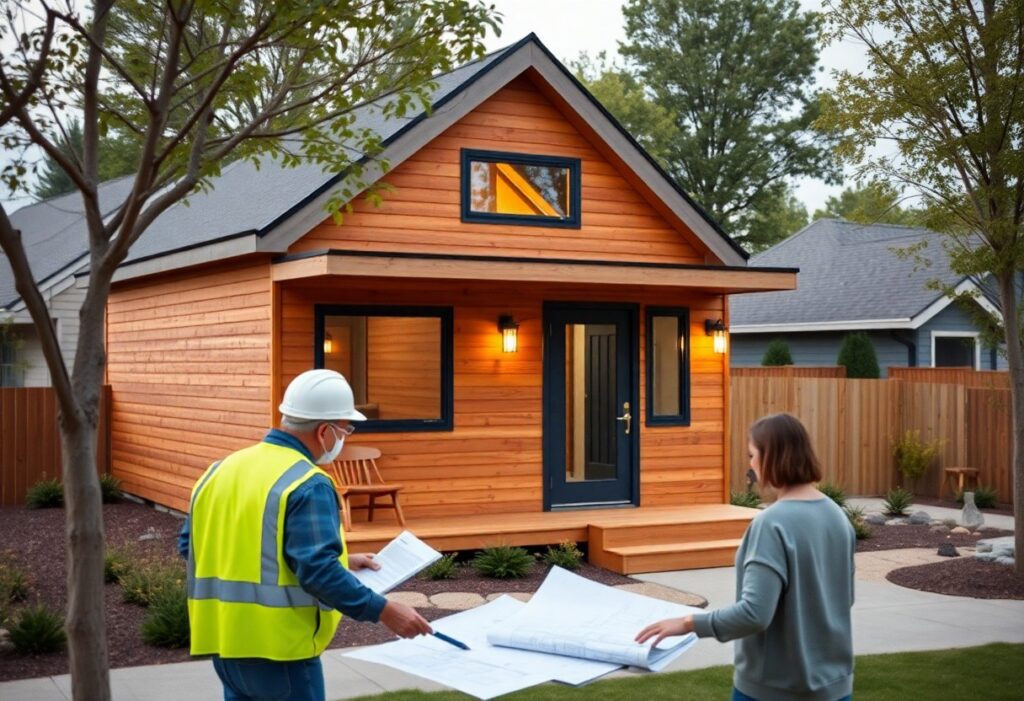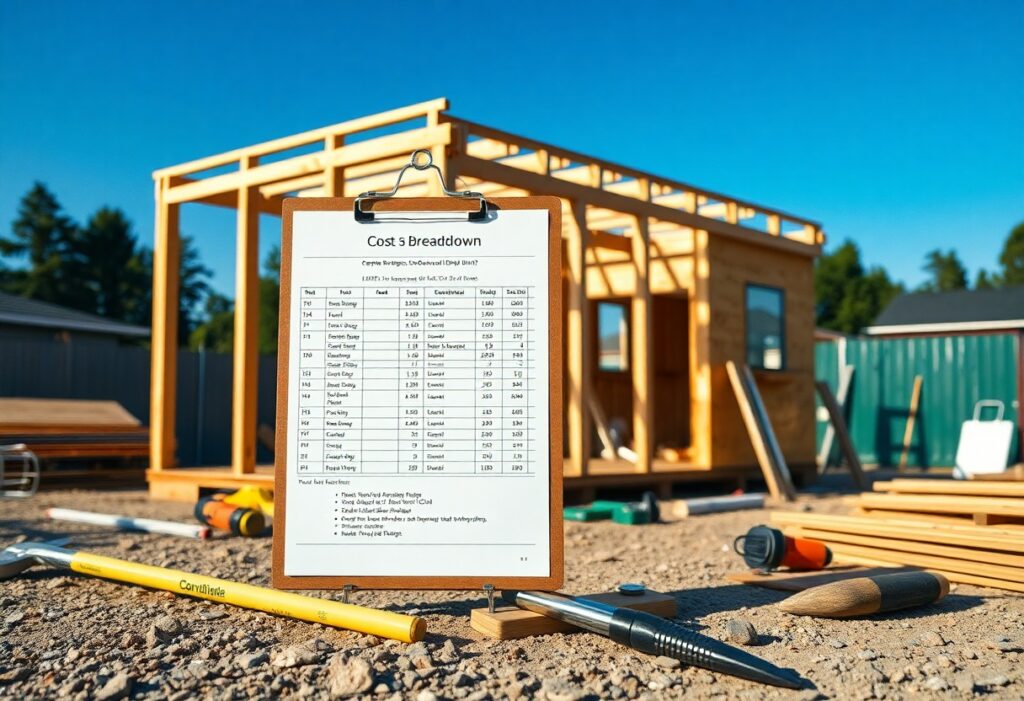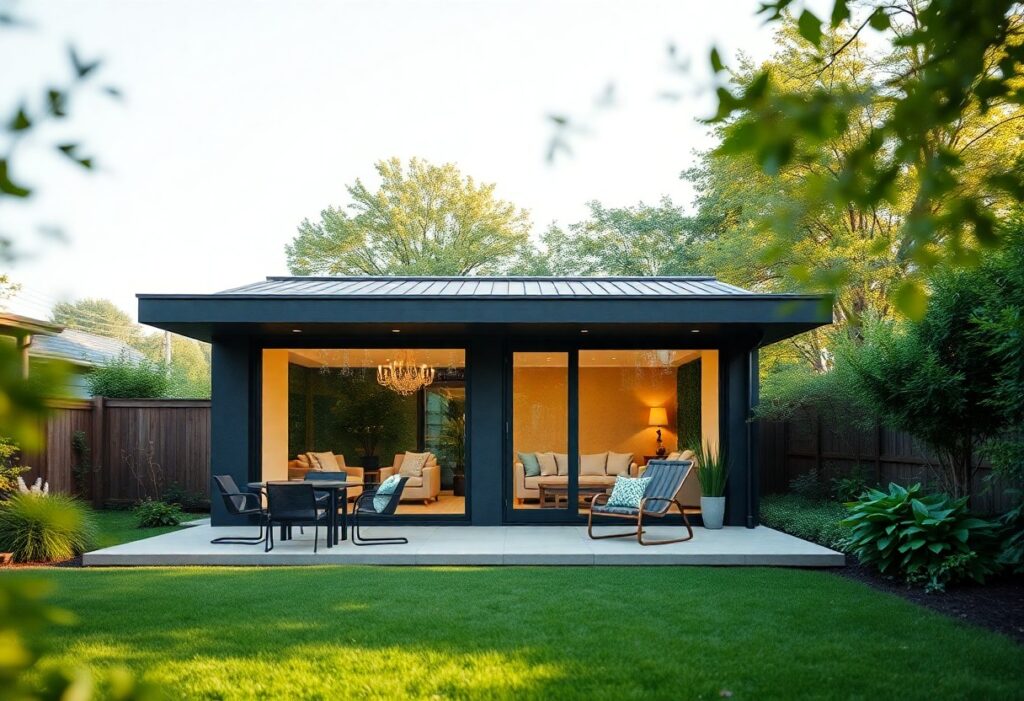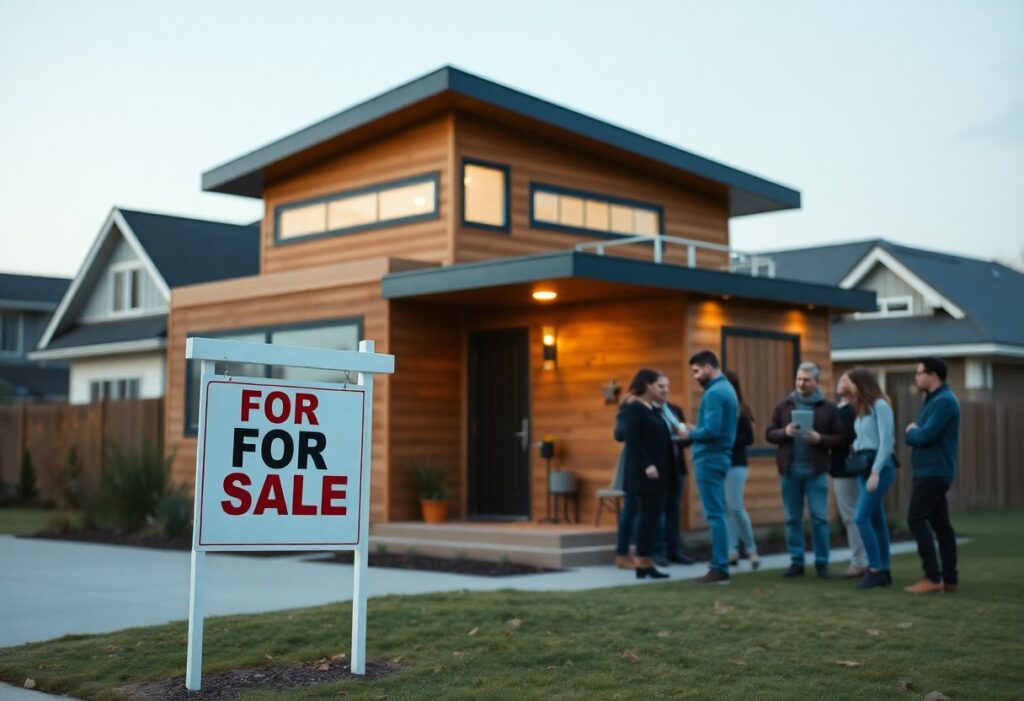Is an ADU a Good Investment? Unveiling the Value in an ADU Contractors near me
ADUs are increasingly recognized as a viable option in many areas. ADU Contractors near me are busier than ever for homeowners considering this investment, it’s crucial to fully understand the benefits and ROI an ADU can offer. This detailed review will help determine whether adding an ADU to your property portfolio is financially beneficial. Additionally, finding a good ADU Contractor will make the process much easier.
Understanding ADUs
An Accessory Dwelling Unit (ADU) is a secondary housing unit located on the same property as a primary residence. Unlike guesthouses, ADUs are complete, self-contained apartment units with separate entrances, kitchens, and living areas. Often referred to as granny flats or in-law suites, ADUs provide versatile accommodation for families, offer rental opportunities, or furnish a private retreat within a residential property. Despite sharing the lot, they do not share a postal address with the main house.
ADUs have gained significant popularity, particularly in places like California, due to their ability to provide additional living spaces for family members who might be priced out of the housing market, such as new college graduates or aging parents. They can also serve as income-generating rental units, offering homeowners a practical way to boost their property’s earning potential. These units can take various forms, including free-standing structures, apartments above garages, or extensions of the main house.
However, even with more liberalized ADU laws, property owners often face challenges due to confusion around what is allowed or limitations that can restrict project feasibility. Understanding these regulations and working with experienced contractors can alleviate many of these issues, making the investment process smoother and more rewarding.
Understanding Junior Accessory Dwelling Units (JADUs)
Junior Accessory Dwelling Units, commonly referred to as JADUs, are compact, cost-efficient rental spaces developed within existing single-family residences. These units, typically under 500 square feet, are designed to optimize existing space by incorporating features like a bedroom, storage options, and a food preparation area. While JADUs can include a bathroom, they might share this facility with the main house. An important aspect of JADUs is that they are integral to the primary structure, meaning they don’t require separate fire-rated walls but do need a dedicated exterior entrance for privacy and accessibility.
Recent Changes to JADU Regulations
Recent updates to JADU regulations have focused on streamlining the construction approval process. Notably, authorities can no longer refuse permits for JADUs based on existing zoning issues or building code violations, provided these issues do not endanger public safety or health and remain unrelated to the JADU’s construction. This shift aims to reduce unnecessary barriers, facilitating more homeowners to create affordable housing options within their existing properties.
By clarifying and easing these regulations, the changes support homeowners looking to maximize their living space while offering additional living options in their communities.
The Increasing Use and Economic Value of ADUs
Since 2020, the number of ADU Contractors near me has surged as the popularity of ADUs has increased. Properties with these units are highly sought after—regardless of the higher cost. According to Porch.com, the market is seeing an addition of 100,000 ADUs each year, and homes with ADUs typically sell for about 35% more than those without. As the housing market appreciates, transforming your space into an ADU not only boosts your property value but also provides versatile living options for homeowners, their families, or renters seeking additional income sources.
New Flexible Space Limits for ADUs under Recent Legislation
With the introduction of new legislation, there are now more flexible space limits for accessory dwelling units (ADUs). Previously, local regulations could restrict the height of ADUs to just 16 feet. However, recent changes provide exceptions to these restrictions, allowing for more possibilities:
- 18-Foot Limit for Detached ADUs: If an ADU is detached and located within a half-mile walking distance from a major transit stop or high-quality transit corridor, it can now reach up to 18 feet in height.
- Multistory, Multifamily Lots: Detached ADUs on properties that have, or plan to have, multistory multifamily buildings can also utilize the 18-foot height allowance.
- Attached ADUs Height Flexibility: For ADUs attached to the primary dwelling, the new limit can extend to either 25 feet or the height limit defined for the primary residence by local ordinances, whichever is lower.
These updates offer greater flexibility in designing and constructing ADUs, making them more adaptable to various urban settings and needs.
How Do Recent Legal Changes Streamline ADU Construction?
Recent legislative updates have smoothed the path for constructing Accessory Dwelling Units (ADUs), minimizing the roadblocks that developers and homeowners previously faced. Here’s how these changes facilitate the process:
- Clarified Guidelines for Multifamily Properties: The new laws remove the guesswork from building ADUs on properties that already have or plan to include multifamily buildings. This clarity ensures that property owners can proceed without unnecessary delays or confusion.
- Revised Fire Safety Regulations: Another significant change is the update in fire safety standards. Previously, adding an ADU could necessitate costly upgrades, like installing fire sprinklers in the main residence. The revised rules eliminate this requirement unless deemed necessary by local authorities, making ADU additions more financially accessible.
- Streamlined Permitting for Garage Conversions: For those looking to convert a detached garage into an ADU, the law now simplifies the permitting process. It mandates that local agencies handle demolition permits for garages concurrently with the ADU permits. This synchronization reduces waiting times and accelerates project timelines.
These legislative changes significantly reduce bureaucratic hurdles, making ADU projects more straightforward and less time-consuming. By addressing these key areas, the law helps homeowners and developers execute ADU projects with greater confidence and fewer regulatory impediments.
How Have Rules Regarding Front Setbacks for ADUs Changed Under Recent Laws?
Recent legislative changes, specifically under A.B. 2221, have significantly altered the regulations concerning front setbacks for Accessory Dwelling Units (ADUs). Previously, local ordinances could impose setback requirements that restricted property development. However, the new law ensures that such limitations cannot prevent the construction of an ADU up to 800 square feet.
This shift empowers homeowners to better utilize their property, offering more flexibility and innovative opportunities to expand living spaces. By removing these constraints, property owners can now develop ADUs more freely, leading to a potential increase in housing availability and efficient land use.
How Have California‘s ADU Laws Changed in Recent Years?
California has seen significant updates to its Accessory Dwelling Unit (ADU) laws, allowing property owners greater opportunities to develop these structures. Here’s a rundown of these pivotal changes:
Height and Space Flexibility
Previously, the height of ADUs was capped at 16 feet. Recent legislative changes have introduced exceptions:
- ADUs can now reach up to 18 feet if situated within a half-mile walk from a major transit stop or within a high-quality transit corridor.
- Detached ADUs on properties with existing or proposed multistory, multifamily buildings can also be 18 feet tall.
- For attached ADUs, the height can extend to 25 feet or match the height limit of the primary dwelling as per local ordinances, whichever is less.
Streamlining the Construction Process
The state has worked to eliminate red tape in constructing ADUs. S.B. 987 addresses several barriers:
- Clear guidelines have been set for building ADUs on sites with multifamily structures.
- Adjustments in fire safety protocols have ensured that adding an ADU does not necessitate fire sprinkler installation in the primary residence.
- The permit process is streamlined, allowing demolition permits for garages to be issued simultaneously with ADU construction permits.
Junior Accessory Dwelling Units (JADUs)
JADUs, defined as smaller units within existing family homes, have undergone regulatory revisions. These include:
- Permits cannot be denied due to nonconforming zoning, building code violations, or unpermitted structures unless these pose a public safety risk.
Permit Application and Feedback
New regulations require local agencies to provide straightforward feedback within 60 days if an ADU or JADU application is denied. This transparency ensures that denials are based on factual deficiencies rather than bureaucratic delays.
Front Setback Adjustments
The constraints on front setbacks have been eased. Local agencies can no longer impose restrictions that hinder the construction of an 800-square-foot ADU, thereby granting property owners more creative freedom.
Upcoming Legislative Changes
Future modifications have been laid out in recent laws:
- A.B. 1033 allows local ordinances to enable the sale of an ADU separately from the main residence.
- A.B. 976 removes the requirement for property owners to reside on-site when building an ADU, even if the primary property has rental units.
These progressive changes aim to tap into existing residential space to address housing shortages and increase the availability of living options in California.
What Further Changes to the ADU Landscape Are Expected with New Legislation?
Recent legislative updates are reshaping the Accessory Dwelling Unit (ADU) landscape in California. These new laws are designed to encourage property development and expand housing availability.
- Separate Sales Permitted: One of the key changes allows local agencies to pass ordinances enabling the separate sale of ADUs from the main residence. This means ADUs can now be sold as condominiums, offering more flexibility and ownership opportunities for property developers and buyers.
- No Owner-Occupancy Requirement: Another significant law eliminates the owner-occupancy requirement for ADUs. Previously, property owners needed to reside in one of the units on the property. Now, owners can construct ADUs even on properties where they only have rental units, facilitating greater ease in property investment and development.
These legislative adjustments provide property owners with new incentives to maximize land usage and contribute further to California’s housing supply, helping to address the ongoing housing shortage in the state. With these changes, the ADU market is poised for growth, inviting more investors and developers to participate.
Assessing ADU Value Addition
The actual value added by an ADU Contractor depends on several factors, including the added living space, market conditions, and the ADU’s quality. For example, if properties in your area are priced at $500 per square foot, adding a 500-square-foot ADU could potentially increase your home’s value by $250,000. However, it’s realistic to expect that ADUs contribute to a 30% increase in property value. To estimate the value addition, multiply your home’s current market value by 0.30.
Maximizing ADU Utilization
To maximize the potential of your ADU:
- Personal Use: Transform it into a storage space, children’s play area, private suite for family visits, or a dedicated home office. These uses enhance your lifestyle and adapt to changing family needs.
- Rental Income: An ADU can generate significant passive income. In some regions, the rental income from an ADU can cover mortgage payments, potentially allowing homeowners to live mortgage-free.
Most Valuable Types of ADUs
The type of ADU Contractors near me significantly influences its value:
- Detached ADUs offer the most privacy and usable space, making them the most valuable.
- Attached ADUs provide great value but less privacy than detached units.
- Interior Conversions (e.g., garage or basement conversions), while the least expensive, still yield considerable returns by enhancing the usability of existing spaces.
Prefab ADUs’ Advantages vs. Drawbacks
Prefab ADUs are manufactured off-site and delivered to your property, minimizing construction disruption and accelerating installation. Although they offer a rapid enhancement to property value, their long-term value can fluctuate based on maintenance and market trends.
How Can Legal Guidance Help in Navigating ADU Construction Projects in California?
California’s introduction of ADU-friendly policies promises more housing options, but this doesn’t guarantee a seamless process for every project. Engaging with legal experts plays a crucial role in navigating the complexities of ADU construction.
1. Understanding Legal Changes: Recent regulations can be intricate and continuously evolving. Legal professionals stay up-to-date with these changes, helping you understand how new policies might affect your project directly. They can guide you through zoning laws, permit requirements, and any exemptions your project might qualify for.
2. Positioning for Success: Before your project even breaks ground, legal consultants can help strategically position it for approval. This might include drafting clear, compliant proposals and anticipating potential hurdles that could arise with planning commissions or local councils.
3. Dispute Resolution: Should conflicts occur, be it with neighbors or contractors, having legal support ensures your interests are safeguarded. Lawyers can mediate disputes, helping avoid costly and time-consuming litigation by finding amicable solutions.
In sum, while new ADU policies simplify some aspects of construction, legal guidance remains an invaluable asset in ensuring your project is both legally sound and efficiently executed.
Economic Implications and ROI
- Budgeting Wisely: Including a 10-20% contingency budget is essential to cover unforeseen costs effectively.
- Market Impact: Consider potential increases in property taxes and utility costs when evaluating overall ROI.
Sustaining Your ADU Long-term
Regular maintenance and adopting sustainable practices help ensure your ADU remains a valuable, efficient, and appealing asset. Utilizing sustainable materials and technologies can significantly reduce operational costs and enhance the ADU’s market appeal.
The new requirement for feedback on Accessory Dwelling Unit (ADU) application denials mandates that local agencies must provide detailed written explanations when rejecting an application. Previously, these agencies could deny permits for ADUs or Junior ADUs (JADUs) without offering any justification. However, with the current regulation, if an application is denied, the agency must explain the decision in writing. This explanation must include a comprehensive list of any deficient or problematic aspects of the application, along with guidance on how these issues can be addressed by the applicant. This change ensures that denials are based on concrete issues rather than being influenced by local bureaucratic delays or attempts to limit development.
Conclusion
ADUs are a strategic investment that can significantly enhance the functionality and financial return of your property. Whether used for personal enjoyment or as a rental property, a well-planned ADU is a sound investment in today’s competitive housing market, providing substantial returns and improving your living space. Finding the right ADU Contractors near me is the key to a successful build.
If you would like more information, call or text (877) 398-8002 or Click here for more information
The ADU Pro, Inc.
15338 Central Ave. Chino CA 91710
(877) 398-8002
Looking to find help financing your ADU? Click Here

www.primarymortgageresource.com



